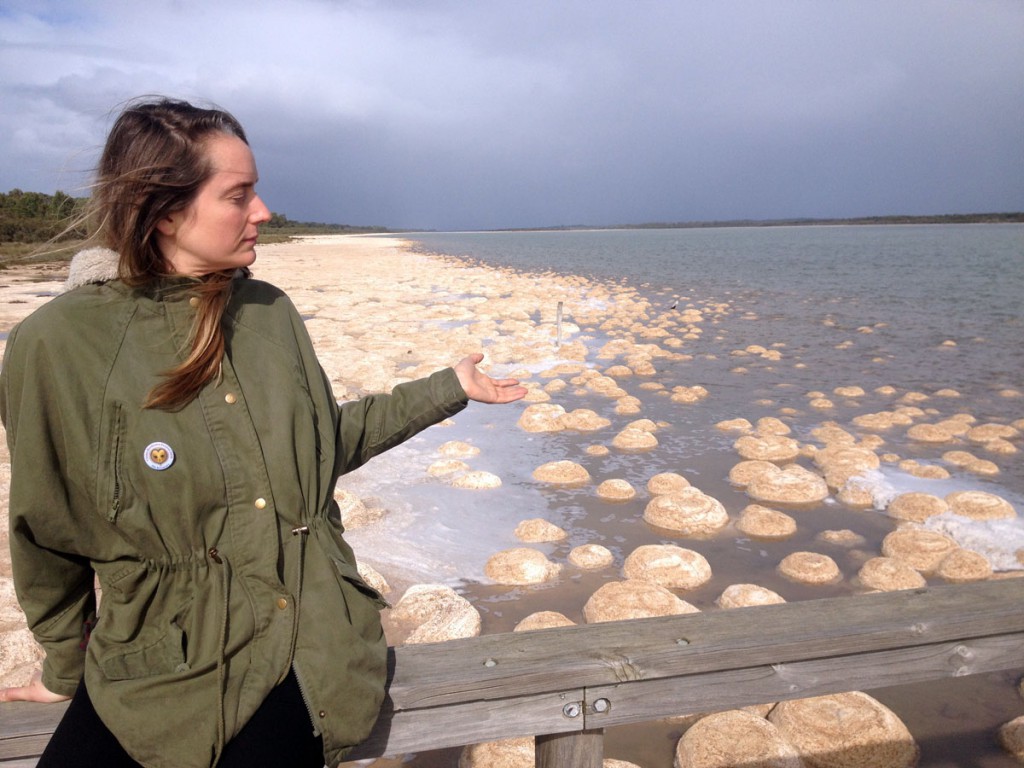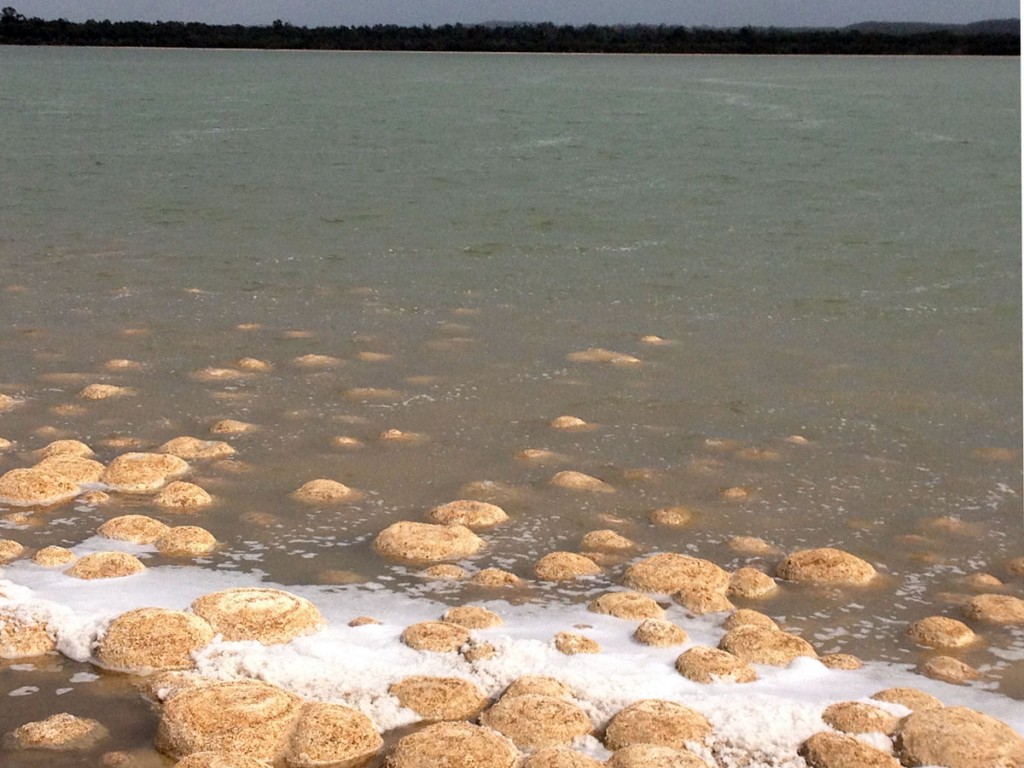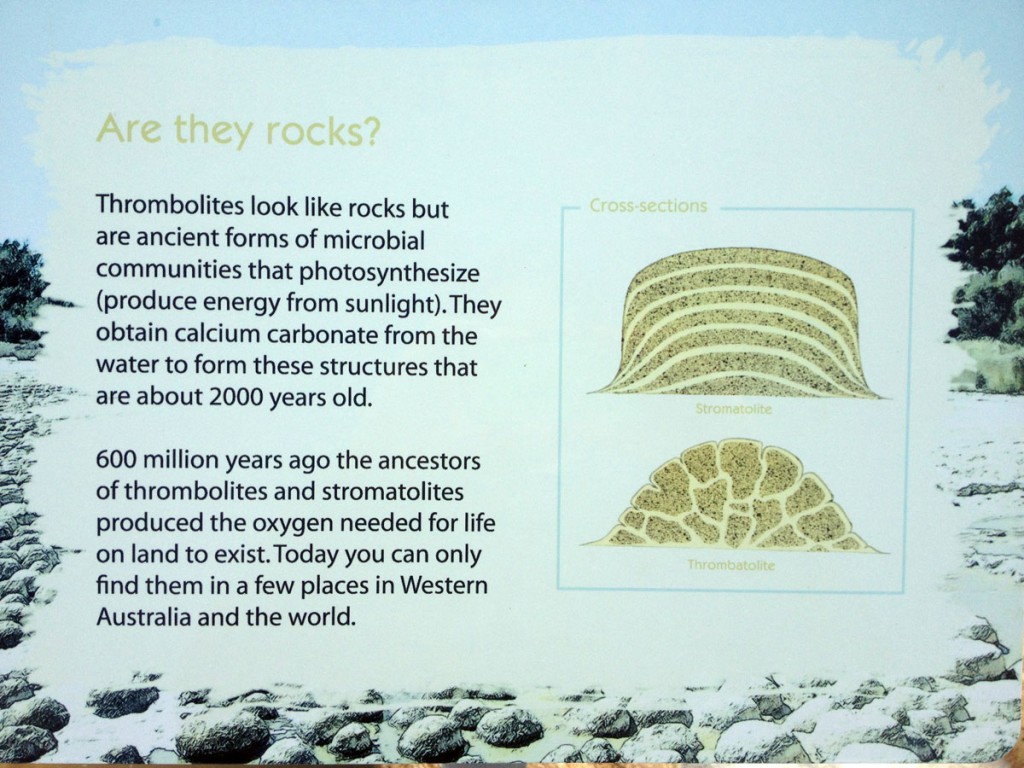During our visit to Western Australia, we visited Yalgorup National Park. The name Yalgorup is derived from the Nyoongar words yalgor, meaning ‘a swamp or lake’ and up, meaning ‘a place of’. While most people visit Yalgorup to see the many different waterbirds in the lakes and swamps of this Ramsar Convention protected wetland, our motives were more microscopic.
Many of the smallest inhabitants of Yalgorup National Park have created microbial mounds called thrombolites. Each of these rock-like structures is actually a microscopic metropolis, built by the diverse community of microbial inhabitants in calcium carbonate-rich waters such as Lake Clifton (pictured above).
Just like the stromatolites of Shark Bay (about a thousand kilometres to the north of Yalgorup NP), each of these living structures are thousands of years old, and are some of the last remaining examples of these ancient assemblages, which dominated the shallow seas around Earth for the first few billion years.





